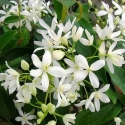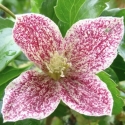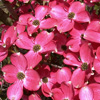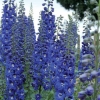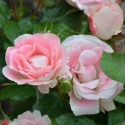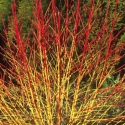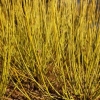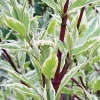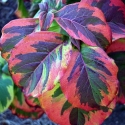Friday 10th August, 2018
Hi
Lamb shanks with Tamarillos and red wine
It was on a weekend off that I found a recipe for lamb shanks that were cooked with tamarillos ... at the time I wanted to make this I hunted high and low for tamarillos and there were just none to be found so I ended up substituting the tamarillo with some tart plum, if I had thought about it, it just wasn't the season for the fruit.
Now that the fruit is in season and available to use, do you think that I can find that recipe? LOL, not a fat chance, so with lamb shanks in the freezer and a bowl full of tamarillos I decided that I was going to wing it.
I had 8 shanks that I floured and seared off in the large cast iron pot that we use for such dishes and set them aside in an oven tray.
Taking 5 to 6 medium sized red onions diced them and threw them into the left over olive oil that was used for the meat.. add more olive oil if needed and sauted off the onions... I then added a handful of finely chopped
rosemary and a whole lot of peeled garlic cloves... too lazy to chop and I thought that they would be nice whole and we have heaps of garlic left that we had grown.
Next was the Tamarillos, and I guessed at how many, but ended up scooping out 8 to 10 of these delicious fruit, loosely chopping up and adding to the pot. I always season with salt and freshly ground pepper, cooked gently for a short while before adding a bottle of red wine...next add the shanks back to the sauce. I did add a little water so that the sauce covered the shanks.
Put in the oven on a low heat approx 130 degree and cook slowly for a couple of hours.. I did a taste test at this stage and decided that it needed sweetening slightly so added a couple of dessert spoons of honey and a touch more salt.
I then turned the oven off leaving the dish inside to complete cooking.
Once the shanks were cooked I removed them from the sauce so that they wouldn't fall apart and slightly thickened the sauce with cornflour. Can't have had enough flour in the beginning.
OMG ... even if i do say so myself, the shanks were delicious... I served them with kumara mash, wilted bok choy and some brussel sprouts.
I had an image in my head of how I was going to plate them, like some kind of master chef, but then after a few wines I just put the dishes out on the bench and we ended up having a competition to see who could plate the best.... it was sooo funny, but i guess that you had to be there. Here are the results.
Tamarillos belong to the solanum or night shade family as do many fruits and veges that we eat. Tomatoes and potatoes spring to mind but also do some weeds like woolly night shade. Generally this family of plants are frost tender but can be grown in micro climates or in warm and frost free positions, I know many that fruit Tamarillos in the Waikato.
Looking HOT naked!
Dogwood conjures up trees that have that beautiful large white flowers but there are a few different species that are large shrubs with umbel like flowers and nice green leaves in the summer but its when they get naked that they really shine with the most glowing coloured stems.
Cornus Midwinter fire... never had these before and the stem are just gorgeous, such a stunning warm orangey red tips blending to a yellow colour the lower you go down the stem ... just like its name midwinter fire. I have often seen these overseas in the English gardens and have only seen the yellow stemmed stolonifera flaviramea and the two red stemmed varieties in NZ being Sibirica and Elegantissima.
I have several Cornus Sibirica in the garden that I cut down in the summer so that it would throw up a whole lot of fresh new canes for a glowing display of colour in the winter months.
Climbers have evolved to get to the light and so they will climb up to get to the top of what you choose to grow them on especially if the light level lower down is poor. If you want them to cover a wall then you will need to choose a site that has more light as this will allow it to grow all over rather than straight up.
Clematis Freckles is a pretty cool climber that has nodding flowers with a cream background which is smothered in masses of brickish red freckling. This, not so large, climber is mostly evergreen though may be slightly summer deciduous which is quite the reverse from what one thinks it should be. I have this species of climber growing through our hornbeam hedges where its leaves and flowers stand out in the winter when the hedges have lost their leaves
Dolphins and Larkspurs ??? Delphiniums
Delphiniums, the queens of the perennial world and these stately plants actually belong to the buttercup family. Google suggests that Delphinium, in ancient Greek, means Larkspur and in Latin means dolphin referring to the shape of the nectary but other sources suggest that the Greeks thought the flower bud shape, with its spur, resembled a dolphin. It is also suggested that in England during Tudor times the nectary was thought to resemble a larks claw.
It becomes apparent that there are many species of delphiniums and these are quite closely related to the annual Larkspur with quite close connections in the common names.
The gorgeous and highly bred ones that we have here belong to the elatum species and should attain rather grand stature when established, especially if given optimum growing conditions.
I always looks at Delphinium plants and think they look so fragile and yet they are reputed to be extremely hardy with the ability to push their way through snow so I guess a couple of late frosts here in the Waikato are not going to cause any grief.
The worst thing that I reckon can happen to a brand new delphinium plant is being devoured by slugs and snails that just adore them. Moral to the story is use plenty of slug bait. I'm sure that the biggest reason that most people loose plants in their second and third seasons is because the molluscs sniff them out before we realise that they are coming up again. Don't wait to bait, population control is a wonderful thing with moluscs, keep the bait available to them so they don't run rampant through the smorgasbord you supply with the new growth of all their favourite perennials and Delphiniums would have to be at the top of their list.
Delphiniums are gross feeders and so will like lots of compost manures and food so give them heaps. Look after them and the crowns will get bigger year after year and the size stems that you can pick will be massive... often you can get a repeat flowering by removing the spent flower spike.
Just arrived in are quality range of delphiniums in a great range of shades from white through to pinks and of course the blues and purples.
It is now seriously time to get all your pruning completed. Leaf burst isn't that far away now... that includes all roses and fruit trees... It still needs to be a dry day. Plan to have some fertilsers on hand for that rainy day when you can go out and give all the garden a sugar fix.
Its planting time so don't hesitate to get those
camellia hedges into the ground. The same goes for
fruit tree and all
ornamental trees the ground is getting warmer and as we all know the rain that we have had has made the soil nice and moist and just perfect for planting. Check out all our fruit and ornamental trees online here.
The best selection of
roses is right now and so if you are after something in particular get in and order yours now and they will thank you for going into the ground at this time of year.
Watch out for downy mildew on your roses... such a sneaky disease as its almost symptom less. if you look carefully sometimes you can see a very faint purple blotching on the new emerging leaves or you may or may not notice that the new leaves are just falling off.. Some rose cultivars are just more susceptible to this infection and many of the new varieties are much more resistant...
There are spores everywhere in the air and the rain moisture and wind transports them around.. If you notice falling leaves and suspect downy then pluck those leaves up and put in the rubbish bin. First cultural rule is removing the leaves as this helps remove reinfection next time it rains.
The days are certainly getting much longer as it is still light...ish at 6 pm these days. I feel the temps are starting to rise too. Blooms are starting to show around the nursery so here's hoping for a lovely dry weekend so we can get all the pruning jobs done in prep for the new spring growth that is about to burst.
Have a fabulous weekend and a productive week.
Lloyd, Harry and the Wairere Team
Make it a Wairere weekend where even GNOMES know that gardening's not a drag.




